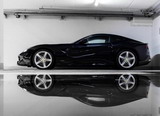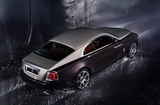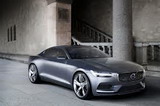Ten Years Of Crashing New Cars
The safety of cars for occupants has increased five-fold for some types of cars thanks to ten years of the Euro NCAP crash testing programme.
Seen as controversial by the motor industry ten years ago, the programme has helped to save lives across Europe. Safety ratings of similar category cars have gone from one star to five stars in less than ten years due to the influence of the European New Car Assessment programme (Euro NCAP), according to the RAC Foundation.
Research shows that as far as the risk of serious injury or death is concerned, cars which score three or four stars in Euro NCAP tests were approximately 30% safer compared with two stars or cars with no score. *
NCAP was established in 1995 and the first tests were supported by the Department for Transport, International Testing, the Swedish National Road Administration, the FIA, the AA and the RAC.
The first cars were tested in February1997 and brought dramatic and shocking results. The worst perfomer for occupant safety was the Rover 100, which was only awarded one star for protection in frontal and side impact. Up until these first tests the UK consumer did not know if a particular car was safer than another car in the category. The poor performance of the Rover 100 had dramatic results with some police forces refusing to use these cars and some mothers refusing to use child minders who ferried children around in these vehicles.
The motor industry was up in arms about the tests claiming that the cars were crashed at unrealistic speeds (40mph for frontal impact and 30mph for side impact). This was the first time in the UK that a series of crash tests had been conducted where the results were made available to everyone.
The UK’s Transport Research Laboratory (TRL) played a key role in developing these tests. All of the cars tested were bought anonymously to ensure that each was a normal production model. Since the early days more than £6 million has been spent on purchasing more than 400 cars representing more than 200 different car models. For the tests two examples of each car were purchased in order to conduct both frontal and side-impact tests.
After initial resistance from the motor manufacturers to the crash-testing programme certain manufacturers broke ranks and started to use the Euro NCAP results as an integral part of their marketing strategy. Now it is common to see Euro NCAP 5 stars emblazoned across print and broadcasting advertising, as well as across the rear window of many cars.
It is interesting to make some comparisons between the first cars crashed and results of most recent tests on the current equivalent models.
The Fiat Punto and Renault Clio both scored two stars in occupant protection in 1997 but five stars in 2005.
The Ford Fiesta and Nissan Micra also scored two stars for occupant protection in 1997 but 4 stars in 2003. The VW Polo scored three stars in 1997 and four stars in 2002. The Rover 100 scored one star in 1997 and soon went out of production so was never re-tested.
“In the new Fiat Punto” TRL explains, “the structure surrounding the occupants has been drastically improved, providing a rigid safety cell which is more capable of withstanding the impact forces. In addition to improvements in structural safety, advanced occupant restraint systems have also been developed which provide greater control of the occupants’ deceleration during an impact. Such systems include dual seat-belt pretensioners and load limiting seat belts.”
Progress on pedestrian safety has been slower but more recent results are encouraging.
Road Safety Minister Stephen Ladyman, said:
"When the UK Government started its NCAP programme a decade ago, it was almost impossible to assess the comparative safety of passenger cars. But in collaboration with the FIA and others, EuroNCAP has pioneered a ratings system that is both a benchmark for manufacturers and a quality assurance for the consumer. Over the last 10 years, the number of stars achieving 5 stars has vastly increased, and people looking for crash protection now have real choice in the new car market. I look forward to what EuroNCAP can achieve in the future".
Edmund King, Executive Director of the RAC Foundation, said;
“Euro NCAP has transformed in-car safety. I was shocked and felt physically sick looking at some of the first cars crashed. Having seen some of the results close up I vowed never to ever travel in certain cars but to campaign for safety improvements. It is gratifying to see that ten years later many of the poorer performers are now five star cars.”
David Ward, Director General of the FIA Foundation, said:
“Euro NCAP placed car safety on the agenda and transformed vehicle design. Cars today routinely achieve five stars for occupant protection, as they should. Progress is being made on pedestrian protection, with the first four star car announced last week. The priority for Euro NCAP’s second decade must be on promoting active safety, such as electronic stability control, to improve crash prevention. I am proud that the FIA was involved at the very start of Euro NCAP, support which continues today through the FIA Foundation.”
James Ellway, TRL's Euro NCAP Project Manager said:
“Euro NCAP has provided vehicle manufacturers with an incentive to build safer cars as well as providing consumers with independent safety advice, which they can use to make an informed choice when buying a new car. Euro NCAP is playing a key role in helping to meet the UK Department for Transport's strategy for improving road safety (2000-2010), which aims to reduce the number of road deaths and serious injuries by 40%.”
Andrew Miller, Director of Research, Thatcham,said;
"As Euro NCAP’s newest member, Thatcham, representing British Insurers, applauds the improvements in vehicle safety driven by the work of the programme. Euro NCAP's work in the last decade has seen occupant safety improve dramatically and now pedestrian safety is also at the forefront of manufacturers design priorities. The growing awareness amongst the motorist that safety is not an option but a right can surely be laid at feet of this powerful organisation."











